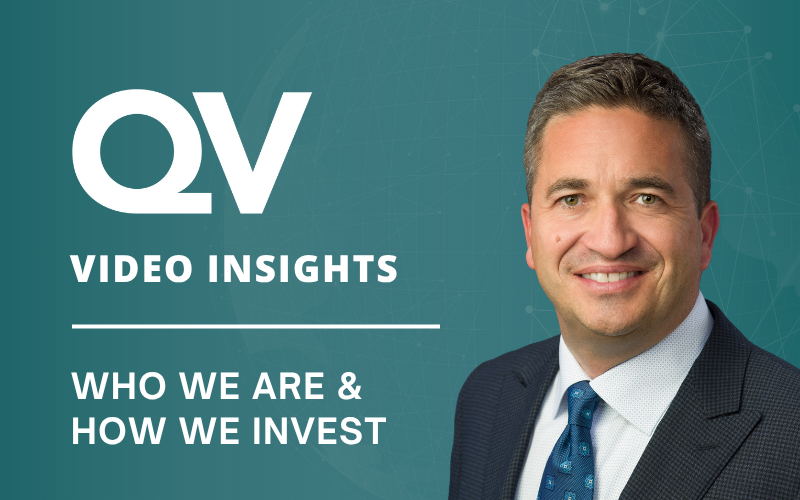Stantec Inc. (“STN”) has been a significant contributor to client returns within the QV Canadian Small Cap (“CSC”) Strategy, appreciating more than 3-fold since its initiation in late 2017. In this Insight we’ll cover the life cycle of the holding, including the initial investment thesis, business turnaround, added benefit from post-pandemic global infrastructure spending, and where it currently stands in our portfolio.

Source: S&P Capital IQ
Initial Thesis: Resilient business model and managed valuation risk backed by a track record of ROE & revenue growth
STN is a global design, engineering, and consulting firm with exposure to the energy, water, infrastructure, environmental and building industries. Since the early 2000s, Stantec has achieved a strong earnings per share (“EPS”) growth rate of 12.7% and an average return on equity (“ROE”) of 13%, a feat achieved by only a few companies in the Canadian small cap universe. Further, STN’s strong free cash generative business model (converting, on average, ~55% of its EBITDA to free cash flow), helps finance its acquisition growth strategy, which has added over $2.5 billion in sales over the last decade (equivalent to half the FY2023 sales). In seeking to understand the long-term financial record, we see STN’s variable cost structure, lower-risk consulting model, and culture (which has resulted in lower-than-industry turnover) have each contributed to the company’s ability to get back on track following different challenges over time.
The CSC strategy initiated an investment in the company in late 2017, when the valuation looked attractive due to depressed margins and ROE, caused by weakness in the oil & gas industry and absorption of a large acquisition made a year prior (1/4 of the market cap at the time). This large acquisition introduced exposure to the more cyclical and lower-margin construction sector, which may have negatively impacted perceived valuations by the market and helped open the door to this opportunity.
The Turnaround
Despite the strong financial performance track record, uncertainty about industry dynamics and pressured profitability made understanding the business model and management’s approach to improving operating performance a critical part of our thesis as margin turnaround projects and industry cycles usually take time to resolve. Between 2015 and 2020, STN had modest share price performance but began to gradually increase its margins and ROE to average historical levels (see chart below) by divesting its low-margin construction arm, diversifying its sales to higher-margin environmental services, and utilizing global M&A to increase organic growth potential through exposure to countries with aging infrastructure like Germany and the UK.

Source: S&P Capital IQ
Increased post-COVID global infrastructure spending, including the US Infrastructure Investment and Jobs ACT (IIJA) and the UK’s AMP8 water initiative (together totalling ~$1.5 trillion), prompted a new prolonged upcycle in the industry. While the company had long discussed aging infrastructure as a support for longer-term demand, it took years for this to play out. We believe these recent industry developments may result in well-above-historic-average organic growth until 2028. Strong operating execution and a realization of Stantec’s assessment of customer/societal needs were key drivers of the past three years’ share price performance. While the timing and magnitude of the tailwind from government programs wasn’t embedded in our initial thesis, investors can benefit from high-quality companies capitalizing on new opportunities.
Throughout its time as a QV holding, STN has ranged from an average to above-average weight due to its attractive risk/reward profile. Over time, we have managed the weight to a smaller position on the back of strong share price performance and expanding valuation multiples. In our assessment, STN is a high-quality business with a potentially substantial runway; while it has grown meaningfully over time, it is still smaller than several of its peers. In this industry, some estimate that ideal economies of scale are generally achieved with around 50,000 employees – a size peers like WSP are close to. For reference, STN currently has 30,000 employees.
Further, STN may have additional opportunities for operating leverage through offshoring engineering work to lower-cost geographies, growing within higher-margin verticals such as water and environmental services, and considering leveraging AI to increase capacity utilization and improve margins.
What’s The Takeaway?
Successful investment strategies should balance quality, price, and weight management across different market cycles. Seeking out and understanding business fundamentals as well as aligning with management teams who are focused on the right strategies can support conviction while giving a thesis time to come to fruition. This investment had a slow start; but so far our thesis rooted in consulting business economics has gradually come to life. Going forward, we continue to follow Stantec’s execution as conditions and the business have improved.




